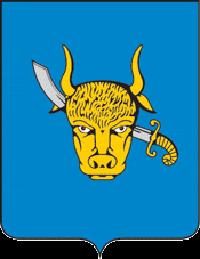
Pryluky. Here Georgiy
Voronoi studied at Pryluky gymnasium from which he graduated in 1885.
This
gymnasuim was founded in 1874 (22.IX) by the sity council. From 1881 to
1887 Georgiy’s father,
Feodosii Voronyi, was a director of this
gymnasuim.
Pryluky
is located on
the Udai
River. It is one of the
oldest Ukraine's
cities. Archeological excavations have shown that a settlement on the
territory
of the present-day city dates back to the second millennium BC. In
chronicles,
Pryluky was first mentioned in 1085 by Prince Vladimir Monomakh. That year
the city-fortress sheltered the
prince from the horde of Polovnsy tribes.
In 1239, Pryluky was destroyed by the Mongols.
In 1362, the city belonged to the territory
of the Great Lithuanian
Principality.
After
the Union of Lublin of 1569,
the city came under the rule of the Polish nobility. At
that
period of time many
inhabitants of Pryluky and nearby villages began to run away, seeking
freedom
in the vast Dnieper steppes.
Settlements
founded by the runaways in the late 16th-early 17th centuries occupied
large
territories. Thus grew the Cossack
community. Poland
tried to suppress this
spontaneous resistance but did so in vain. In 1648, Hetman Bohdan Khmelnitsky introduced a
new system of territorial-administrative division in Ukraine,
having divided the country
into regiments. Under this system the city of Pryluky became the military center of
the
Pryluky Regiment. In 1781, the Cossack regime was abolished in Ukraine
and
Pryluky became an uyezd of the Malorossiya
Governorate.
The
oldest civil building in the town is the former chancellory and
sacristy of the
Pryluky Cossack Regiment. Apart from the Baroque church of St.
Nicholas
(1720), the town possesses two cathedrals built by Cossacks in the
1710s and 1720s
and the new Neoclassical cathedral (1806) dedicated to the Nativity of the
Theotokos.